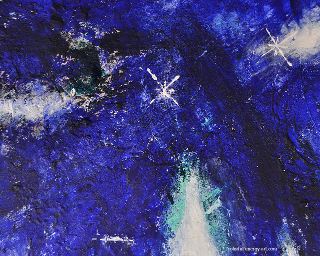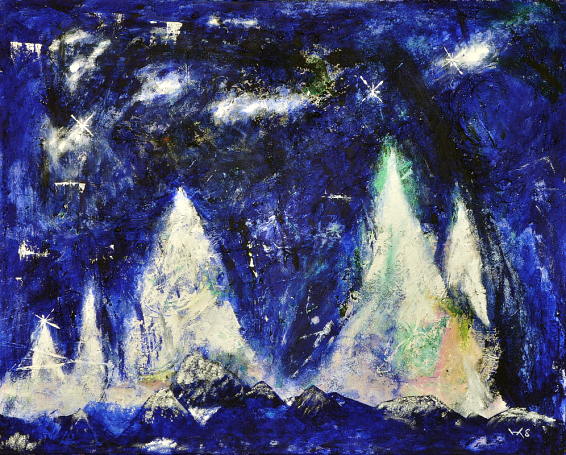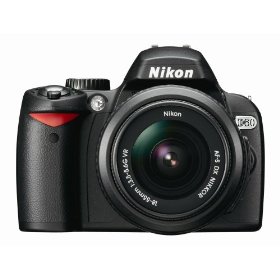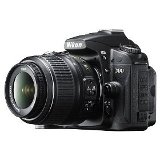
Nikon D90 Review
With the Nikon D90 you (like me) are up in the professional level. With 10.2 compared to the D40´s 6.1. It has a reasonable price for the semi-professional.
 I Love Nikon, since I own the
professional analog Nikon F90x, the
transfer to digital is very easy. Nikon has stayed with their design
and structure.
I Love Nikon, since I own the
professional analog Nikon F90x, the
transfer to digital is very easy. Nikon has stayed with their design
and structure. I personally own the Nikon D90 with a 18-200 VR lens. I have it since it has video recording, a digital display on top of the camera and it´s much heavier (more steel) which makes it more sustainable. Besides I can use my old analog lenses in this one as well. If you want a cheaper and still great camera, check out the Nikon D60.
Nikon D90, 18-105mm Nikkor. Buy from Amazon support this site -buy the camera only from my affiliate retailer |
Nikon D90 key features |
Paintings
taken with the Nikon D90,
Nikkor DX VR 18-200 mm F3.5-5.6G Zoom
(edited images)

Size: 19.7 x 27.6 inches - 50 x 70 cm
Material: Acrylic on canvas, white frame

Size: 36.2 x 28.7 inches - 92 x
73 cm
Material: Acrylic on canvas, white frame
Size: 11.8 x 16 inch - 30 x 40 cm
Material: Acrylic, rust, plaster of Paris on cotton canvas, metallic spray

Different Statements about the Nikon D90
ERGONOMICS - The Nikon D90 is solid, tight, and well balanced with the 18-105 VR lens. It's always ready and it shoots very fast. I love all the direct access buttons. They're easy to press, and you don't have to go into the menus as much. This allows you to work pretty fast. It's heavier than the D60, but it's still very manageable to carry around. It fits my average-sized hand better too. I noticed the shutter sound is different than the Nikon D60 (if that matters to you). It sounds more professional; more like a fast "whoosh" than a "click-click". And there are so many internal customizations, so you can set it up exactly as you want.LENS - Biggest surprise was the 18-105 VR lens which I expected would be ho-hum, but turned out to be pretty sharp and clear. Better results than the 18-55 VR. We've really come a long way from the days (30 years ago) when you were cautioned to ALWAYS to buy a prime lens, NEVER the kit lens because of it's poor image quality. With computer-aided design and new technology, that's not true anymore.
ISO - I really like the new wide range of ISO settings, especially when coupled with the Auto-ISO setting. Mine is customized to keep the camera at ISO 200, but kick in at 1/30. This means anytime lighting decreases enough for the shutter speed to drop below 1/30, the D90 will automatically compensate by raising the ISO high enough (up to a limit you set) to help keep your shutter speed up. Noise at high ISOs isn't an issue. In fact, you have to zoom in pretty close for it to be even slightly noticeable, so now I can use Auto-ISO a whole lot more. Its an amazing feature!
IMAGE QUALITY - I shoot RAW to maximize detail and allow room to adjust exposure. Image quality is very good to excellent depending on your RAW converter (best results with View NX and Capture NX; Adobe ACR very good). When shooting JPG, images are sharp and colors are true with not too much saturation in the Standard picture mode, which is how I like it. Picture Modes can all be customized to suit your taste.
LIVE VIEW - is great for the occasional high or low shot. I didn't think I needed it, but when I had the D60, I found myself in many situations where I really could have used it. I'm very glad I have it now. Unlike a point-and-shoot, focus is slower in this mode, but I wouldn't be using Live View if I were in a rush anyway.
ACTIVE D-LIGHTING - this is now available in various strengths from Low to Extra High. Mine has been on Auto, which lets the camera decide, but I change it at times depending on my needs. Again, another great customization.
CONS
-At this price, Nikon should include a robust image editing software, or at least a decent discount on Capture NX2, which works great, but costs extra.
-Kit lens is thick in diameter (67mm). Also, the front glass of the lens seems somewhat exposed, as if it's not recessed that much (it's just enough for a lens cap). I worry that it'll get scratched easily. Good thing Nikon included the lens hood.
SUMMARY - Overall I'm extremely happy with the Nikon D90. It's designed for serious shooting, but it's still fun to use; noticeably heavier than the Nikon D60, but still not a burden. It's more solid and substantial, so it's less prone to camera shake. Nikon packed it with a ton of features and customizations, so now I finally have everything I want in a DSLR, without it being overblown and overpriced. I'm surpising myself with really spectacular shots. Most importantly, it's helping me to become a better photographer. I'm sure I won't be bored anytime soon.

Nikon D60 Review

Beginning Photography Tips
Text Guide - Easy
















